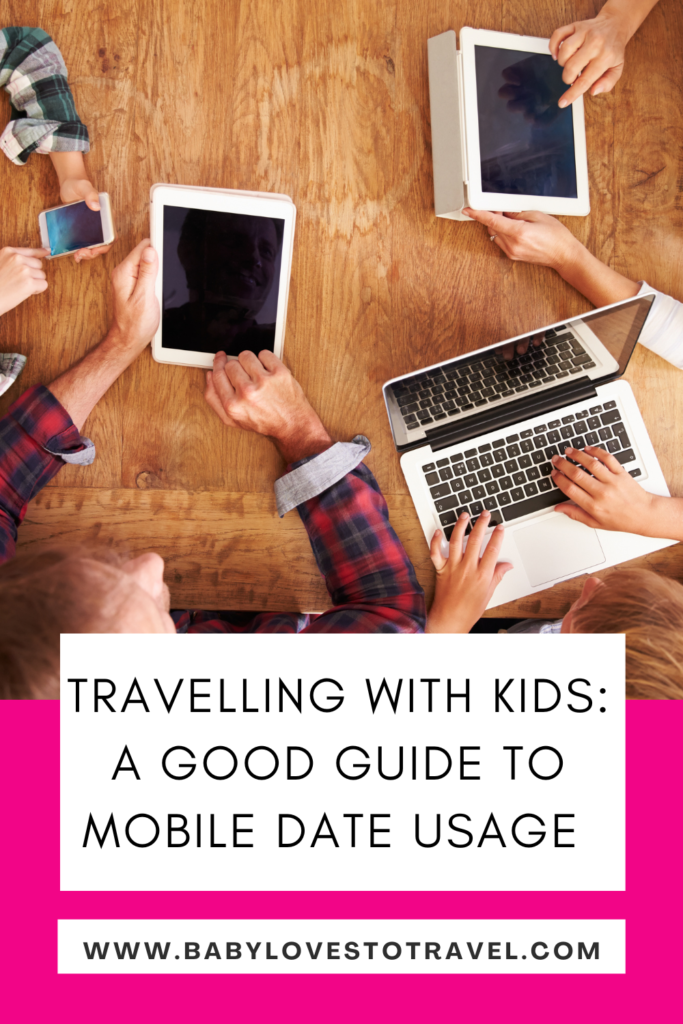
As my children have grown, the value of having mobile data while travelling has become a top priority. The question of Wi-Fi availability is often the first thing they request when we step off a plane. Back in the day when they were tiny explorers, it didn’t really faze them (only us grown-ups) because their tablet games were all offline. No Wi-Fi needed, no worries. But now that they’re older and wiser, being connected is a necessity. From streaming their favorite shows and tunes to staying in touch with their crew on social media, having mobile data is like oxygen. When it comes to data for travel, my ultimate wish is a connection that ticks all the boxes: easy, affordable, and speedy enough to satisfy everyone’s digital cravings.
In this guide, I’ll delve into the best ways to use your mobile phone to access data while travelling, ensuring seamless connectivity and enhancing the overall travel experience for your family.
- Explore Local Data Plans
- Consider eSIM Technology
- Maximize the Use of Wi-Fi Hotspots
- Offline Maps and Navigation
- Utilize Data Saving Features
- Consider a Portable Wi-Fi Device
- Encourage Responsible Data Usage
Baby Loves to Travel is a participant in affiliate programs, such as Amazon Services LLC Associates Program, meaning if you click the link, find something you love and get it, we’re going to make a small commission at no extra cost to you.
Explore Local Data Plans
An excellent option for ensuring seamless data connectivity for your family while traveling is to explore the local data plans. Before you leave you can research the local mobile service providers at your destination and look for data packages specifically designed for tourists. These plans often offer affordable rates and generous data allowances, allowing you and your kids to stay connected without worrying about excessive roaming charges.
Things to consider:
- Make sure your phone works in the destination that you are travelling to. Some phones are locked and only work with the carrier that activated the phone. You can in some instances arrange for your carrier to unlock your phone.
- The one downside can be the constant need to swap SIMS, especially if you are travelling to multiple countries in a short period of time. Make sure you store your SIMs in a safe place and have on hand a SIM needle to eject the SIM tray. My teen and I discovered a cool travel hack after losing many SIM needles: we found that an earring post, which is generally always available in our case, can quickly and effectively open up a SIM tray.
Consider eSIM Technology
eSIMs (embedded SIM cards) have revolutionized the way mobile data is consumed while traveling. With an eSIM, you can conveniently switch between different mobile networks without the need for physical SIM cards. This means that you can easily activate local data plans or purchase short-term data packages directly from your smartphone. You need to investigate whether your device can actually support eSIM technology and explore the availability of eSIM data plans at your travel destination.
Using an eSIM can provide your family with the flexibility to choose the most suitable and cost-effective data plan during your trip. One such eSIM solution is Airarlo. With AirArlo you can connect in 200+ countries worldwide, easily switching between different calling or data plans depending on the country. The Airarlo App easily manages all your data and calling needs, also allowing you to keep your own number, which is not possible when switching to a local SIM.
A good option to manage costs is to consider a combination of local plans and eSIMs. Depending on the length of your trip and the countries you’re visiting, you might find that a local data plan is more cost-effective in some destinations, while eSIMs work better in others.
Maximize the Use of Wi-Fi Hotspots
Many hotels, cafes, and public areas provide free or paid Wi-Fi access, allowing you and your kids to connect their devices and use data-intensive applications without consuming your mobile data plan. Research ahead of time to identify Wi-Fi hotspots in popular tourist areas or download apps that help you locate available hotspots. My children are naturally very good at locating free Wi-Fi hotspots and will swiftly seek them out on their own!
Offline Maps and Navigation
Make use of apps that offer offline maps. Prior to your trip, download all of the offline maps for the destinations you’ll be visiting. This way, you and your kids (especially teens who often want to wander on their own) can access GPS navigation without relying on continuous data usage. Offline maps ensure you can explore confidently, even in areas with limited or no internet connectivity.
Utilize Data-Saving Features
Encourage the whole family to optimize their mobile data usage by enabling data-saving features on their devices. Most smartphones have built-in options to restrict background data usage, limit app refreshes, and optimize data consumption. Additionally, suggest using lightweight or data-saving versions of popular applications, such as browsers and social media apps, to minimize data usage without compromising functionality.
Consider a Portable Wi-Fi Device
Investing in a portable Wi-Fi device, also known as a pocket Wi-Fi or a mobile hotspot, can be an excellent solution for global family travel. These devices allow multiple devices, including your kids’ smartphones, tablets, and laptops, to connect to a dedicated Wi-Fi network, which can be more cost-effective than individual SIM cards. Research and compare different portable Wi-Fi options to find the one that best suits your family’s needs.
Most portable Wi-Fi devices do require their own SIM, so you will need to find a SIM card at your destination. Or alternatively there are options like the Solis Lite, a portable device that fits into the palm of your hand, has a 16 hour battery life and can share Wi-Fi with up to 10 devices. The Solis eliminates the need for a SIM card. You simply download the Solis app, create an account, choose a plan and then enjoy Wi-Fi in up to 135 countries.
Encourage Responsible Data Usage
Encourage the entire family to optimize their mobile data usage by enabling data-saving features on their devices. A skill not just good for travel, but for everyday life. Most smartphones have built-in options to restrict background data usage, limit app refreshes, and optimize data consumption.
Remember, while mobile data enhances the travel experience, it’s also essential to strike a balance and encourage everyone in the family to immerse themselves fully in the destinations, cultures, and activities around them!
Thank you for reading! You may also enjoy The Best Family Travel Apps.
Posts on this page may contain affiliate links, meaning if you click the link, find something you love and get it, we’re going to make a small commission at no extra cost to you. For full details about our affiliate links please see our Disclosure Policy.
Save to Pinterest:

